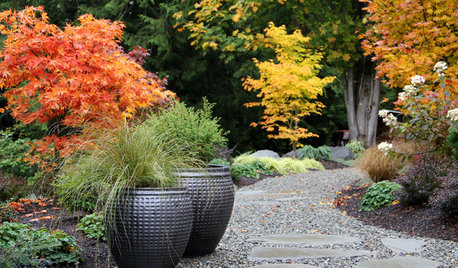Veg Garden Relaunch
elraja
12 years ago
Related Stories

Guest Picks: Herb Gardens for Small Kitchens and Gardens
Up the wall, easily portable or beautifully decorative, these solutions help even the smallest kitchens and balconies get growing
Full Story
EDIBLE GARDENS8 Surefire Vegetables and Herbs for Beginning Gardeners
Learn the edible plants that are popular and easy to grow in a backyard or container garden
Full Story
GARDENING GUIDESNortheast Gardener's June Checklist
Tote out garden ornaments, unleash your color passion and glean inspiration from the many Northeast tours
Full Story
GARDENING GUIDESLush, Foodie Abundance in a Small Urban Garden
This modest backyard garden provides its owner with fruit and vegetables all year round, thanks to an innovative low-maintenance approach
Full Story
GARDENING AND LANDSCAPINGBuild a Raised Bed to Elevate Your Garden
A bounty of homegrown vegetables is easier than you think with a DIY raised garden bed to house just the right mix of soils
Full Story
EDIBLE GARDENSHerb Garden Essentials: Grow Your Own Oregano and Marjoram
Say 'buon giorno' to classic Italian herbs you can grow just as easily in pots as in the summer garden
Full Story
CONTAINER GARDENS9 Tips for Creating an Artful Container Garden
Make your potted plantings a beautiful sight with these ideas for container types, plant groupings and more
Full Story
FRONT YARD IDEAS10 Ideas for a Front-Yard Edible Garden Your Neighbors Will Love
Choosing attractive, well-mannered plants and sharing the bounty will go a long way toward keeping the peace
Full Story
FARM YOUR YARDAdvice on Canyon Farming From L.A.'s Vegetable Whisperer
See how a screened garden house and raised beds help an edible garden in a Los Angeles canyon thrive
Full Story
GARDENING GUIDESGardening Solutions for Heavy Clay Soils
What’s a gardener to do with soil that’s easily compacted and has poor drainage? Find out here
Full StoryMore Discussions








bi11me
elrajaOriginal Author
Related Professionals
Erie Landscape Architects & Landscape Designers · Hershey Landscape Architects & Landscape Designers · Signal Hill Landscape Architects & Landscape Designers · Avocado Heights Landscape Contractors · Brookfield Landscape Contractors · Cicero Landscape Contractors · Fuquay-Varina Landscape Contractors · Kettering Landscape Contractors · Pikesville Landscape Contractors · Webster Groves Landscape Contractors · Westchester Landscape Contractors · Canton Driveway Installation & Maintenance · Deer Park Driveway Installation & Maintenance · Gages Lake Driveway Installation & Maintenance · Pontiac Driveway Installation & MaintenanceParmaJon
bi11me
flora_uk
elrajaOriginal Author
t-bird
tishtoshnm Zone 6/NM